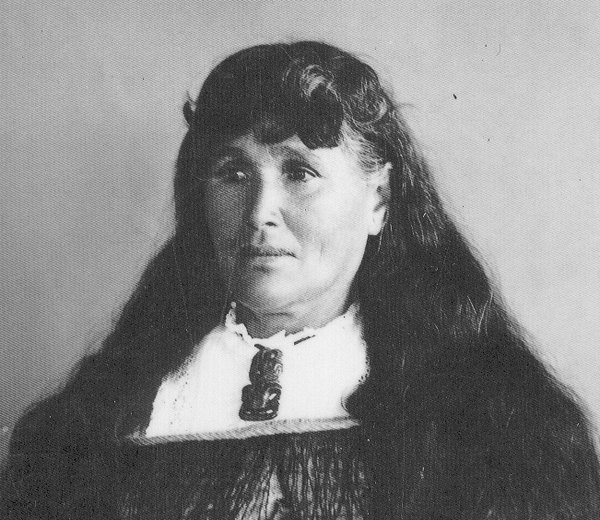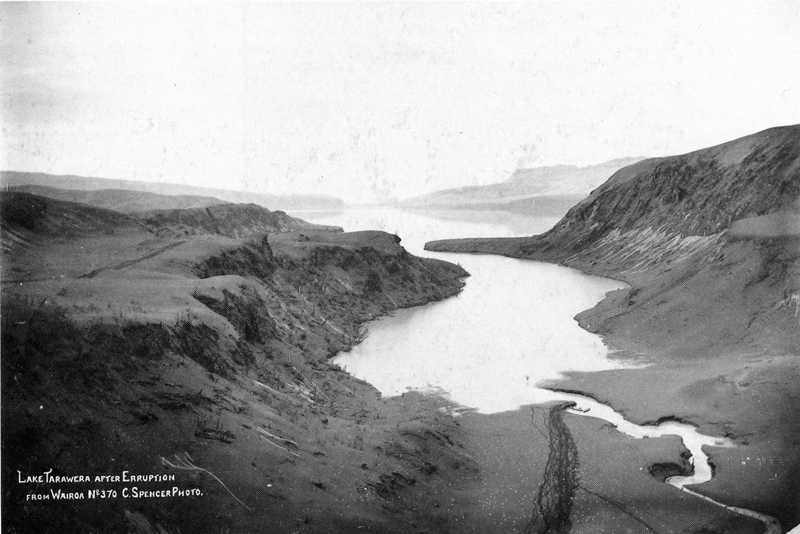Was The Phantom Canoe a warning sign of impending doom?
The village Tohunga - sacred and spiritual Priest
Tuhoto Ariki, the tribal priest of Te Wairoa, came from a long line of high priests. From an early age, Tuhoto was fascinated by the mysteries of priesthood. He became known as a great magician and wonder-worker with powers over the air and the underworld.
Many feared Tuhoto as a Tangata Makutu, a Wizard with the ability to destroy men with his magic. He was a highly spiritual Tohunga with great knowledge and respect for the gods.
At the time of the Mt Tarawera eruption, Tuhoto was living in Wairoa with the Tuhourangi tribe. At 100 years old, the Wizard was both respected and feared. The tribe, often too afraid to venture near him, was unsure of the extent of his power and treated him as an outcast.
Prosperity vs. greed
As tourists flocked to Te Wairoa to see the famous Pink and White Terraces, the Tuhourangi tribe saw an opportunity to profit from the attraction. They charged £2 to be rowed across Lake Rotomahana and £5 to make a sketch or take a photograph.
The tribe’s wealth increased instantaneously and Tuhoto felt they were exploiting the natural wonder. He feared it neglected the rules of Tapu (sacred Maori guidelines) and would offend the gods.
The more prosperous the tribe became, the more Tuhoto watched them become demoralised by alcohol and overcome by greed.
The local Tuhourangi Chief took things a step further when he replaced the traditional paua with gold sovereigns in the eyes of the ancestral carvings in the new meeting house, Hinemihi. Tuhoto warned the tribe that their disregard for ancestral values and would bring fateful consequences but the tribe was beginning to think of Tuhoto as a scornful old man and they dismissed his warnings.
The earth and the gods echo Tuhoto’s warnings
Whilst boarding the boat to the see the Terraces in May 1886, Guide Sophia and her tourist party experienced a sudden rise in the lake level. The strange surge quickly subsided and was accompanied by an eerie whimpering sound.
Without much alarm, the group continued their journey completely unaware of the fate that would follow.
11 days before the eruption, a group of Maori guides and European tourists were visited by a phantom Maori war canoe. Its 13 ghostly occupants appeared dressed for a funeral, some with the heads of dogs and others with their hair detailed with feathers of the Huia and White Heron.
The terrified eyewitnesses all had similar accounts of the sighting and brought the news to Tuhoto to interpret the events. Tuhoto feared it was a bad omen and warned “He tohu tera ara ka horo katoa enei takiwa. It is a warning sign that all will be overwhelmed.”
Tuhoto had a spiritual connection with the gods - he knew the way they worked - but what followed was destruction on a scale even Tuhoto couldn’t have imagined.
In the early hours of June 10, 1886, Mt Tarawera threw columns of fire into the air and coated the sky in dark grey ash as far as the eye could see. Shortly after, Lake Rotomahana exploded obliterating the Pink and White Terraces into millions of tiny fragments.
The once prosperous Te Wairoa was now buried under a cement of ash, mud and debris.
Lives lost and a village destroyed. Was Tuhoto to blame?
As the death toll in the area approached 150, the village was stricken with grief. Their prosperous future was swept out from under them by a force so great they would never recover what they had.
Angry Maori pointed the blame at Tuhoto Ariki. They believed Tuhoto had become envious of his tribe so, with evil in his eye, used his magic to bring destruction to the village.
Buried inside his whare under a blanket of ash, Tuhoto himself was a victim of the eruption. He was dug out four days later by European rescuers, remarkably surviving the ordeal with no food or water.
Maori onlookers refused to help dig him up and asked for him not to be rescued. After all, they had an unyielding belief that Tuhoto had cursed Te Wairoa and caused the disaster.
So what happened to Tuhoto Ariki?
Tuhoto was taken to the Rotorua Government Sanatorium where doctors bathed him in disinfectant and shaved his head before letting him rest.
To a priest, hair was a symbol of strength and to cut it was a very serious matter. Superstitious as it may seem, the more hair Tuhoto lost, the weaker he became and he died shortly after at the age of 100.
Many Maori believe he could have lived longer had he not lost his hair to the hands of the European doctors.
His name lives on in the steep Tuhoto Ariki mountain biking track that begins at the highest point of the Whakarewarewa forest.
To this day, Te Wairoa is a reminder of Tuhoto’s warnings. The land is beautiful and green again but the once thriving village remains buried there today.










Connect with Us
Facebook YouTube Instagram Tripadvisor Blog Email